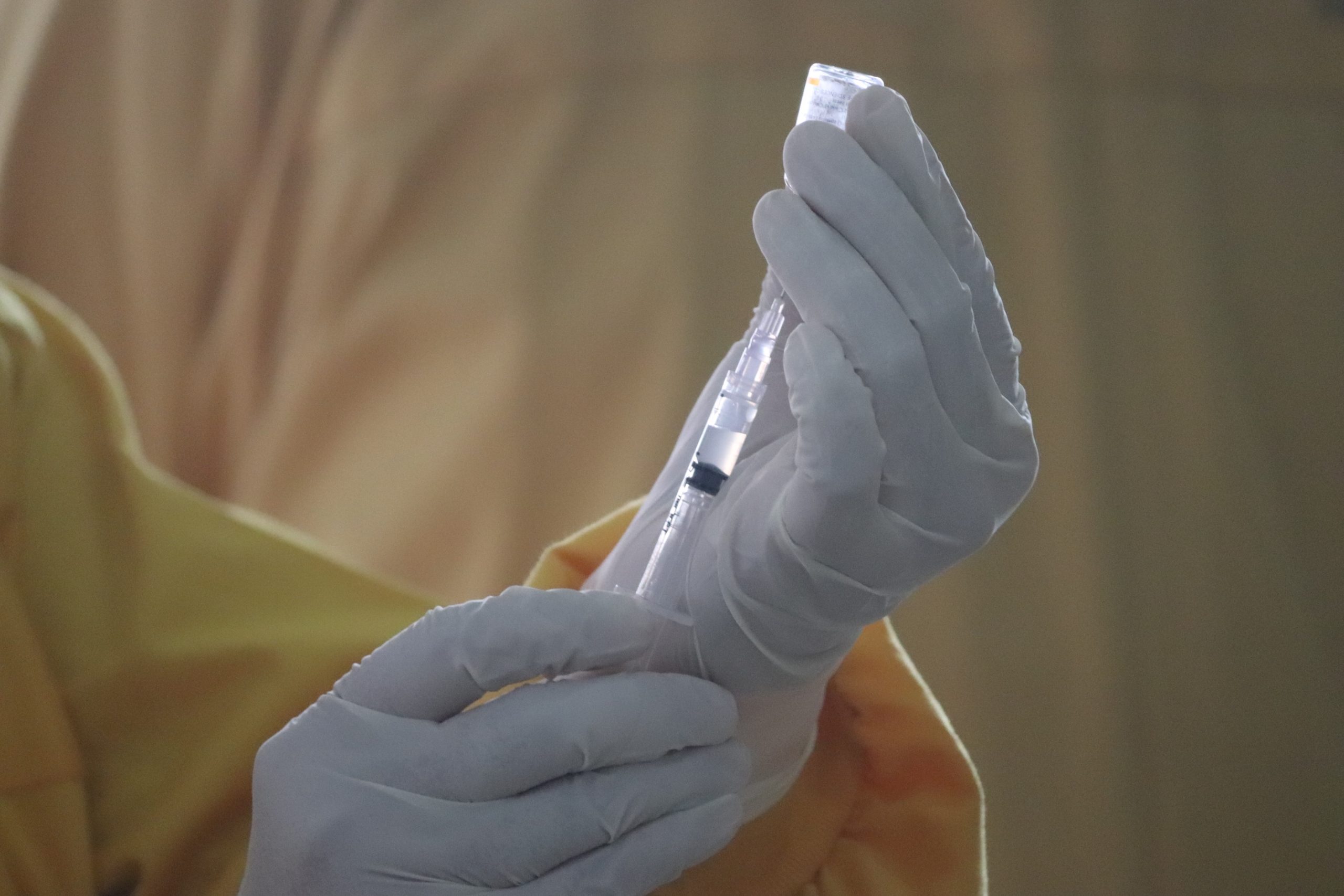Hijacking of Pro-Vaccination Twitter Effort Is Focus of Bridges and Bridges-2 Analysis
Tweets reveal how superior organization, social media practice of anti-vaccine messages came to dominate event by health professionals
by Ken Chiacchia
A well-intentioned 2020 Twitter effort by doctors to support vaccination called “#DoctorsSpeakUp” backfired in a flurry of anti-vaccination tweets. Using Bridges and Bridges-2 at PSC, scientists analyzed Twitter content on the day of that event, discovering the elements that made the anti-vaccination message so strong, as well as the superior pre-event organization that made it overwhelming. Based on these findings, the team created a list of seven best-practices for future social media events in support of medical and public health efforts.
Why It’s Important
It began with the noblest of intentions. A physician with a popular Twitter account—Zubin Damania, known as ZDoggMD online—decided to clear the air on vaccines, calling on his colleagues to share their stories and thoughts about the value of vaccination and the risks of vaccine-preventable diseases. The community would launch #DoctorsSpeakUp on March 5, 2020.

It didn’t work out the way they planned.
Instead of stories about the value of vaccines, the effort saw a surge of anti-vaccination tweets. The event had been hijacked.
“One of the aspects that we looked into was … the ways that people were discussing this type of information online, particularly with the focus on certain vaccine hesitancy … It is, I think, a really beneficial time to be looking at social media to get a sense of what’s going on in these communications and how we might as public health advocates be able to smooth out some of that rough road that we’re seeing with people being hesitant or downright adverse to engaging in vaccinations for the current pandemic.”—Jason Colditz, University of Pittsburgh School of Medicine
Jason Colditz of the University of Pittsburgh School of Medicine and his colleagues at the Pitt Graduate School of Public Health, the Pitt School of Health and Rehabilitation Sciences and Kids Plus Pediatrics of Pittsburgh decided to better understand how anti-vaccine voices came to dominate the #DoctorsSpeakUp Twitter event. Using the Big Data power of PSC’s Bridges and Bridges-2 advanced research computing systems, they wanted to tame the vast flow of Twitter data associated with the event, gleaning clues as to the origin and surprising apparent organization behind the anti-vaccine response.
How PSC Helped
Over a number of previous projects, PSC staff, particularly Senior Scientific Specialist Joel Welling, had helped the team get their analyses running using Twitter data, fine-tuning the computing until it ran reliably, through Bridges’ 2015-2021 tenure and into a smooth switchover to Bridges-2. With Bridges and then Bridges-2, they examined how sentiment toward vaccination, type of account and tweet content—such as personal stories and general sentiment toward science—interrelated on March 5, 2020. Using software called Botometer, they also analyzed the accounts for telltale signs of being generated by a bot—a computer-generated message rather than one from a human.
Of a sample of 847 #DoctorsSpeakUp-relevant tweets from the day of the event, 28.8 percent came from a user identified as a parent, 8 percent from a health professional and 5 percent from a user identified as both. A whopping 78.9 percent of all tweets were anti-vaccination. But the relationship was reversed among the health professionals, among whom 79.4 percent were pro-vaccination. Users who identified as both health professionals and parents were at about the same level, with 76.2 percent pro-vaccination. A staggering 96.3 percent of parent-only users were anti-vaccine, and over half—51.4 percent—of tweets coming from organizations were anti-vaccine. Though bots contributed only a small number of tweets on either side, anti-vaccination tweets were nearly five times as likely to be from bots as pro-vaccination tweets.
“We’ve been working with [the] Pittsburgh Supercomputing Center since before Bridges, worked through the duration of Bridges, and we’re now on Bridges-2. I’ve been working really closely with Joel Welling, who’s just been great and thoughtful as a collaborator … [There are] terabytes and terabytes of data that we’ve collected from Twitter over the span of several years; but these data are fast-moving and [analyzing them requires] stability and up-time, and that’s really where working with PSC has been beneficial.”—Jason Colditz, University of Pittsburgh School of Medicine
The team uncovered how anti-vaccine voices came to dominate the #DoctorsSpeakUp event. For one thing, anti-vaccine organizers undertook a concerted and widespread pre-event effort to recruit help far beyond what ZDoggMD and colleagues attempted. Widely circulated online posters encouraged parents to tweet in opposition to the doctors, suggesting wording for tweets—such as “When will #DoctorsSpeakUp that vaccines harm and kill children?”—that showed up in many of the March 5 tweets. “Anti-tweets” were surprisingly likely to include links to scientific research—89.7 percent—though they often misrepresented the research they were linking to. Personal stories featured in 73.2 percent of anti-tweets.
By comparison, only 26.8 percent of pro-tweets mentioned personal stories, and only 10.3 percent cited the scientific evidence for vaccine safety and effectiveness. The personal stories are especially important, as scientific research shows they convince people more effectively than scientific citation alone. While ZDoggMD is a popular social media figure, with 275,000 YouTube followers and 62,500 Twitter followers, the anti-vaccination groups amassed a far greater social media footprint. Also, well-meaning efforts to support #DoctorsSpeakUp—such as the sympathetic #NursesSpeakUp and #ParentsSpeakUp Twitter hashtags—may have diluted the endeavor, by dividing pro-tweets among several hashtags while the anti-tweets used #DoctorsSpeakUp in a disciplined way to keep the anti-message concentrated. Finally, and unlike the anti-effort, #DoctorsSpeakUp didn’t provide participants with sample tweets or training in responding to contrary views sympathetically and clearly.
The scientists published their results in the journal Vaccine in May 2021, which you can read here. In that paper, the authors provided a list of seven best-practices for social media health education efforts in the future.

